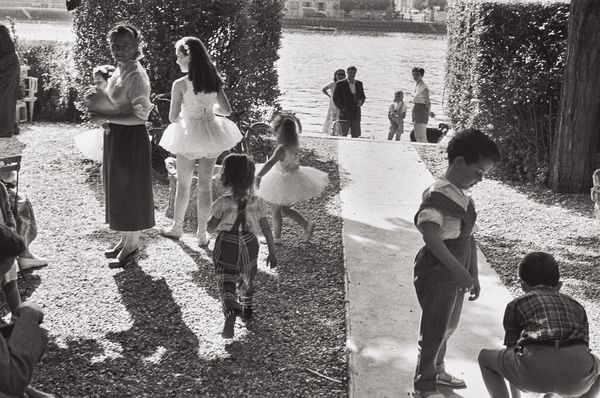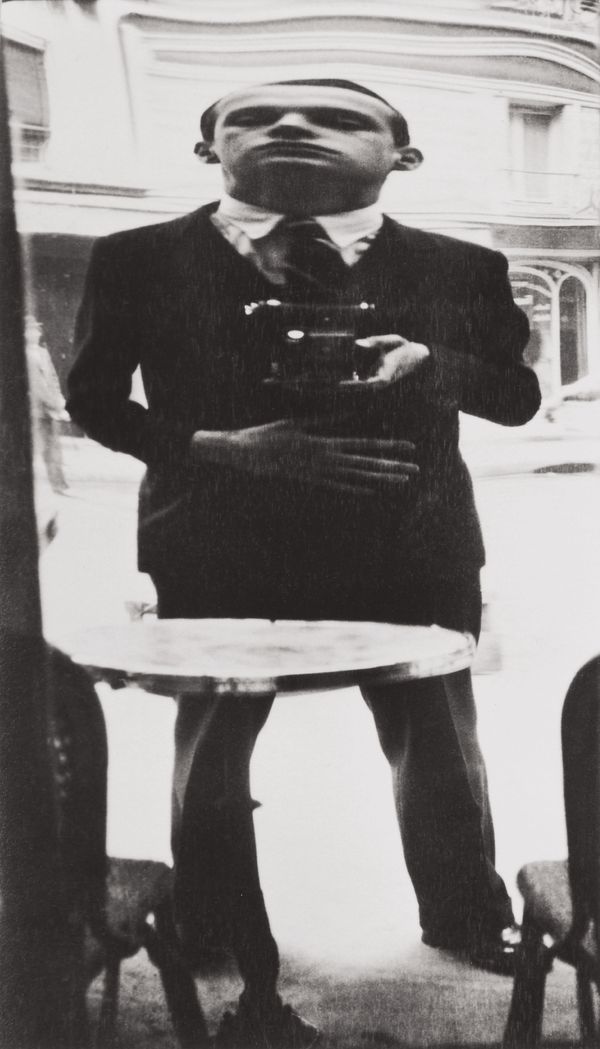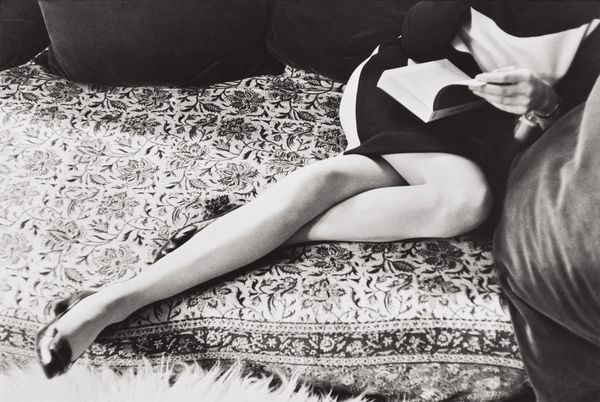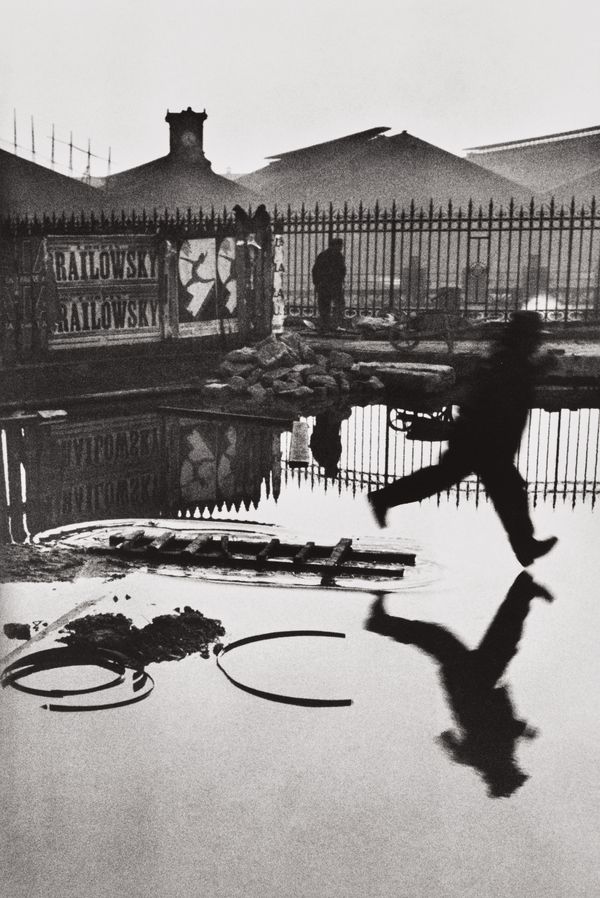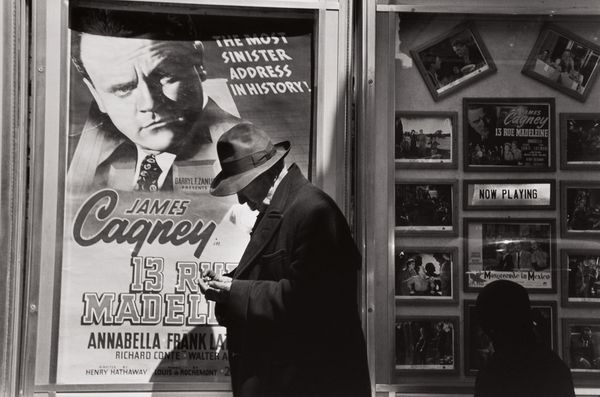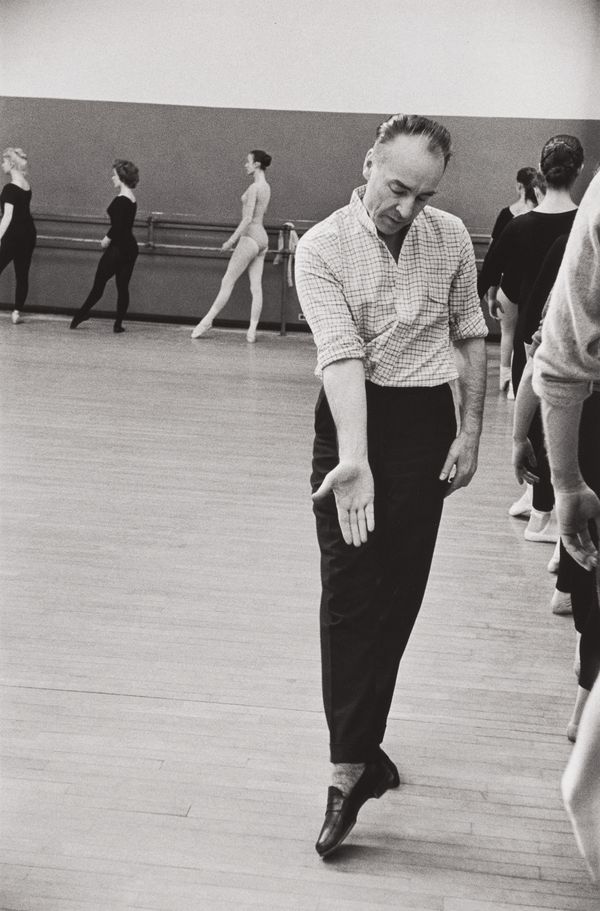Henri Cartier-Bresson Near Juvisy-sur-Orge, France, 1955
Peter Galassi: Peter, your collection really does seem to cover the waterfront—to survey the whole of Henri Cartier-Bresson's [HCB] career. Was that a goal that you developed, or did it just turn out that way?
Peter Fetterman: I never set out to build the collection in a specific way. It just happened as I discovered and studied the work. So it was purely organic. I would fall in love with an image and figure out a way to add it, just like you discover a new piece of music or a new novel. Maybe there is a specific point of view. I think all "Collecting" is autobiographical so perhaps there was something going on in my life at the time when I made a specific choice.
I met many great photographers at 198 rue de Rivoli...It was almost like a salon.
In our video above, hear from Peter Fetterman about the impact of Cartier-Bresson on his life and career, and his impression of living with such a diverse array of iconic photographs in his personal collection.
PG: In your introduction, you say that Henri and Martine's apartment on the rue de Rivoli became your spiritual home. I certainly can understand that. Often there were other photographers, of course, but I was struck with how broad the range of their friendship was—the Georgian filmmaker losseliani, the sculptor Raymond Mason, a Japanese scholar who was translating Proust's letters. Do you recall other encounters?
PF: Yes, of course, I met many great photographers at 198 rue de Rivoli. Ferdinando Scianna, Josef Koudelka, René Burri, Willy Ronis, Édouard Boubat, Robert Doisneau, etc., because Henri and Martine were always entertaining and helping other photographers. It was almost like a salon, always fascinating people there. I met Henri's personal physician, who published a small catalogue of Henri's drawings, and an eminent Buddhist scholar, a subject Henri embraced in later life.
Henri Cartier-Bresson Self Portrait, Paris, circa 1932
PG: I share your admiration for Near Juvisy-sur-Orge. Did you know that the spot is very near the site of the famous image commonly referred to as Sunday on the Banks of the Marne—which isn't on the Marne, but on a basin off the Seine? (An easy error to make, since the geography gets very complicated as the two rivers snake toward Paris.)
PF: I didn't know that these two locations were geographically close. I have always thought of these two images like Seurat paintings. What amazes me is that there are so many levels of storytelling in them.
Here's an anecdote for you: I was exhibiting at an art fair in New York several years ago when a woman came into the booth and was looking intently at a print of 'Juvisy' for about 10 minutes. I asked her if she had any questions. I recognized her name and she told me that she was an art critic for the New York Times and that this is one of the greatest pieces of art she had seen in her 20 years at the publication. She said she was so moved by it she had to have it for herself.
Henri Cartier-Bresson Martine Franck, Paris, 1967
PG: I didn't then know Henri and Martine, of course, but I suspect that the wonderful picture of Martine's legs was made around the time they were falling in love. Although she is fully clothed, I read it as a very intimate picture. And although there is just this one, I think it puts Martine among the great beloved women of photography—Georgia O'Keeffe, Charis Wilson, Eleanor Callahan…
PF: I think Martine's Legs is one of the most erotic images in the history of photography. You're right it is a "Muse" image. Such emotion within it—it is like a Neruda love poem. How lucky Henri was to have found a woman like Martine to share his life with. She is in a Chanel skirt. I asked Henri once about this photo: "What was she reading." He answered with a twinkle in his eye, "Proust of course!" Say no more.
PG: Behind the Gare St. Lazare: The catalogue quotes HCB about shooting the picture through the narrow gap in the fence, which produced a thick black blur along the left edge of the image. (The whole frame is reproduced in the Scrapbook published by the HCB Fondation in 2006.) I've always thought it was because of that flaw that, as far as we know, Henri never printed the negative in the 1930s.
Henri Cartier-Bresson Behind the Gare Saint-Lazare, Paris, 1932
PF: Yes, it is often the case that certain images take on an iconic life of their own after they were first taken. It was always one of our most requested images in the gallery. I think if you or I were taking the photo, the man jumping over the puddle would be in Brooklyn before we realized that there was an image to be captured. The same with Hyères.
PG: Seville, Spain: I believe the squiggly black line in the lower right is a consequence of a tear in the negative inadvertently caused by Georges Fèvre at Picto (Pictorial Service, the lab established by Henri's friend Pierre Gasmann after the war). Fèvre was a very gracious man as well as a great printer. He was also a great friend of Cartier-Bresson, who took the tear in stride and I believe ultimately appreciated how it complements the image—a little bit like Marcel Duchamp's attitude toward the shattering of The Large Glass.
PF: It is hard to imagine the print without that black line. It somehow gives the image its power as it complements its subject matter so well.
Henri's American images are so underrated...
Henri Cartier-Bresson Lower East Side, Manhattan, 1947
PG: Foley Square: I'd wager dinner for two at the Grand Véfour that no one has ever made a better picture of a self-satisfied American 'fat cat'.
PF: Agreed, this is as great an image or even greater as any in Robert Frank's The Americans. It is pure Arthur Miller. Henri’s American images are so underrated, that's why you see many of them in the collection. His America in Passing book is one of his best books in my opinion—it's that objective European eye. I love it that he always signed his name "Hank Carter" when he checked into a hotel here.
PG: George Balanchine: Isn't it exquisitely satisfying how Balanchine's arm and hand are silhouetted against his dark pants, even as the tip of his thumb seems to coincide perfectly with the gentle wave of wrinkles at the edge of the pants.
PF: I think this Balanchine portrait is as great as his Giacometti studio portrait, but far less well-known. They are more than just environmental portraits—Henri's genius in these images is that who they are, and what they have accomplished in their lives, merge seamlessly.
Henri Cartier-Bresson George Balanchine, New York City, 1959
PG: Did you ever talk to Henri and Martine about the planning of the Henri Cartier-Bresson Fondation in Paris? My sense is that he went along with it because he trusted her completely, but that she did all the heavy lifting, to make sure that his work would be properly preserved and accessible. I know that it was Martine's dream to find a permanent home with additional space for the Fondation that could better serve its mission than the wonderful building in which they opened in 2002. Agnès Sire, director of the Fondation, has done a great job of pursuing that goal in the absence of her dear friend and partner, Martine. I understand that the new venue will open in the fall of 2018.
PF: Yes, I talked to Martine a lot about the Fondation. I always thought she was a really talented photographer and I had the great honor of exhibiting her work too. However, she was completely dedicated to making the Fondation happen at the expense of her own career. She was selfless. I often told her about owing my whole photographic education to the wonderful first ICP Building on Fifth Avenue that our friend Cornell Capa had also created against all odds.
The Fondation is equally important.
I remember having dinner with her once. I said she looked tired and was concerned for her. "I have been with lawyers all day trying to make it happen." I know Henri and Martine's legacy is in great hands with Agnès Sire and her wonderful team.
They will create an even greater mecca for photo devotees and I'm sure the photographic community will embrace and support it. As they should, as a tribute to this great man and his equally great wife.
Peter Galassi was Chief Curator of Photography at The Museum of Modern Art, New York from 1991 to 2011 and organized two important Cartier-Bresson exhibitions during his tenure: 'The Early Work' (1987) and 'The Modern Century' (2010), and authored their respective exhibition catalogues.
